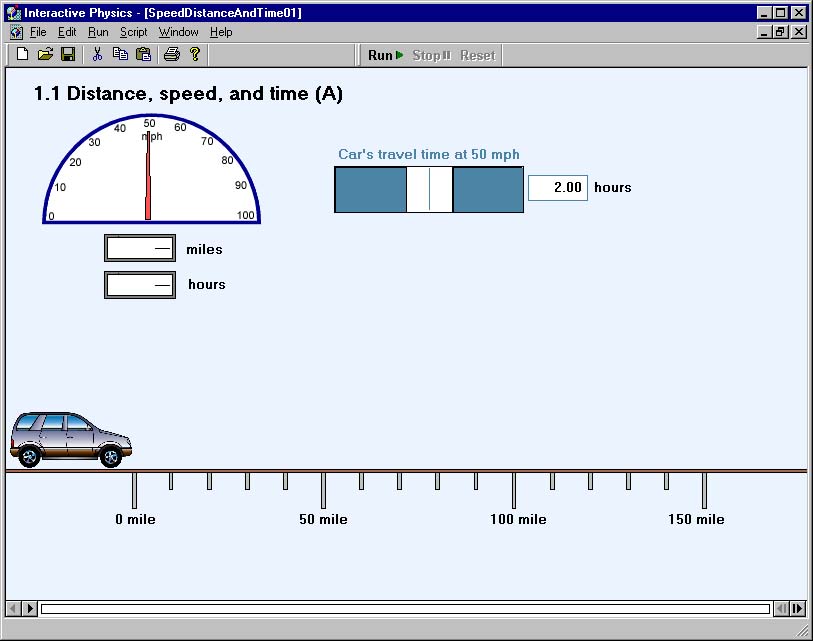The distance that a car travels depends on the car's average speed and travel time (elapsed time). In mathematical terms,
DistanceTraveled = AverageSpeed * ElapsedTime

- Suppose the car has an average speed of 50 mph (the abbreviation mph stands
for miles per hour) and the car travels for 2 hours. How many miles has the
car traveled?
Result:50 miles/hour * 2 hours = 100 miles
To answer this question with Interactive Physics, click the Run button. After the simulation stops, look at the meter that measures the distance traveled by the car and verify that the value reported by Interactive Physics matches the value you calculated with tthe formula above. When you have finished, click the Reset button.
- Suppose the car has an average speed of 50 mph and the car travels for 3 hours.
How many miles has the car traveled?
Result:50 miles/hour * 3 hours = 150 miles
To answer this question with Interactive Physics, click the Reset button (if necessary) and click and drag the slider that controls the car's travel time so that its value is 3 hours. Then, click the Run button. After the simulation stops, verify that the value reported by Interactive Physics matches the value you calculated with tthe formula above. Click the Reset button when you have finished.
- Suppose the car has an average speed of 50 mph and the car travels for 1 hours.
How many miles has the car traveled?
Result:50 miles/hour * 1 hours = 50 miles
To answer this question with Interactive Physics, click the Reset button, change the slider so the car's travel time is 1 hour, and click the Run button. Verify that your calculations match those reported by Interactive Physics. When you have finished, click the Reset button.
- Suppose the car has an average speed of 50 mph and the car travels for 2.5 hours.
How many miles has the car traveled?
Result:50 miles/hour * 2.5 hours = 125 miles
Copyright © 2006-09 by Design Simulation Technologies, Inc.